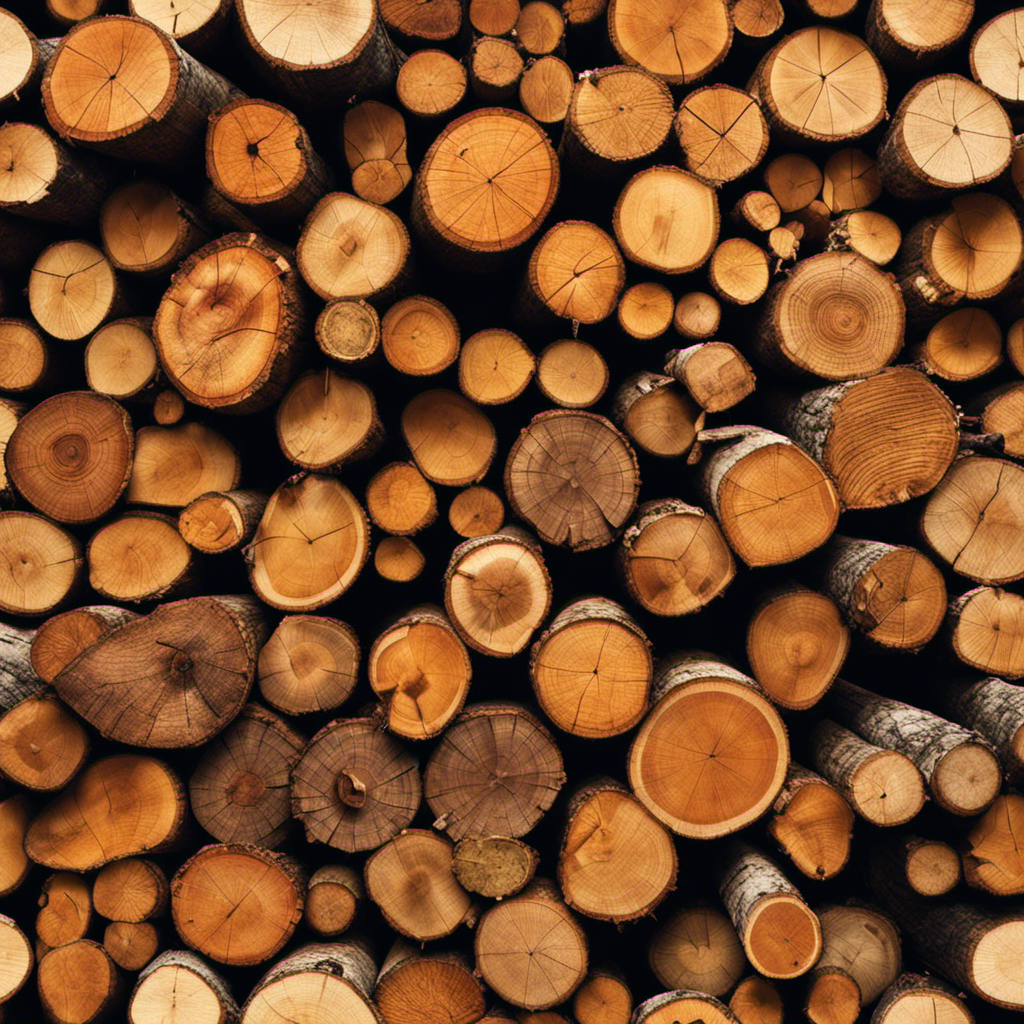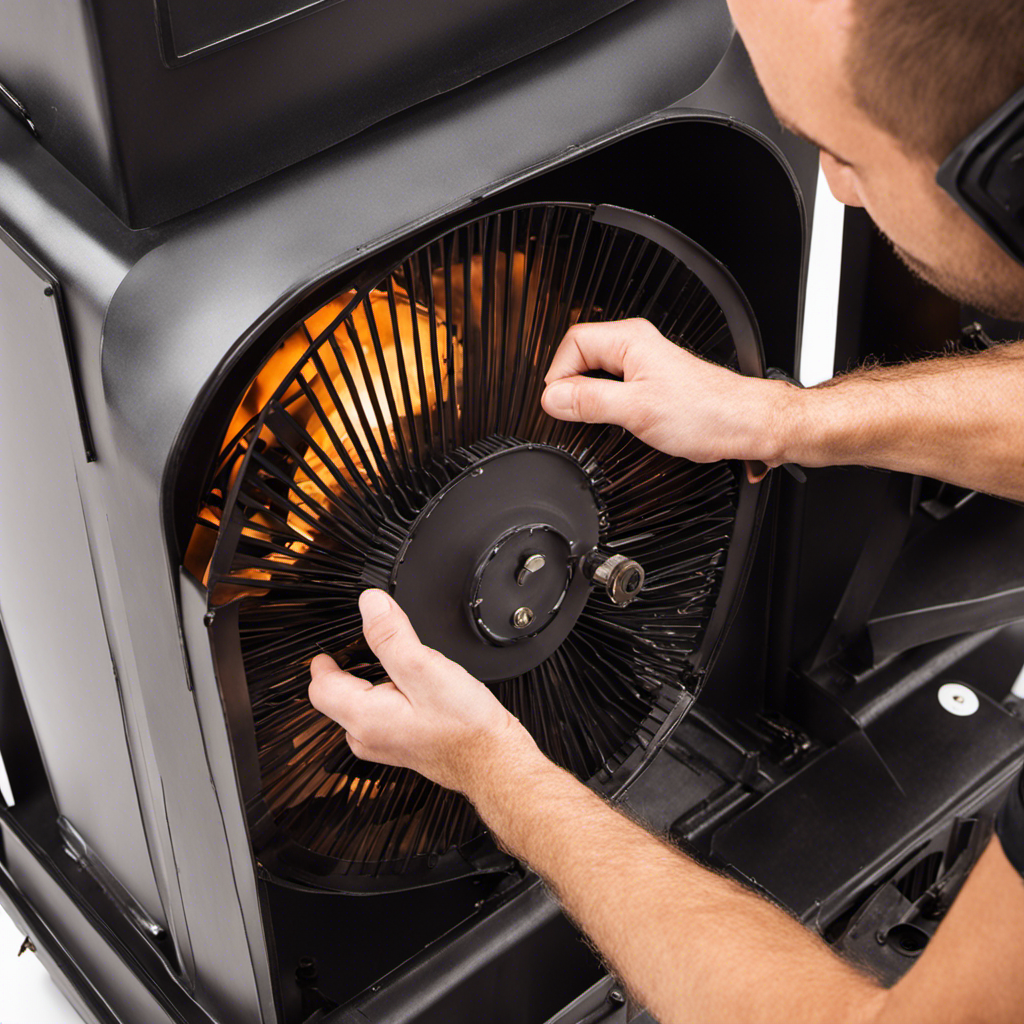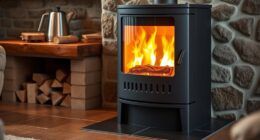I’ve always been profoundly fascinated by the workings of circulator wood stoves. Imagine: on a cold winter night, you’re huddled close to the welcoming warmth of your wood stove. But, have you ever stopped to consider the exact principles that allow it to function?
In this article, we’ll delve into the components, combustion process, airflow, heat distribution, and maintenance of circulator wood stoves.
Get ready to uncover the secrets behind this efficient heating appliance.
Key Takeaways
- The design of a circulator wood stove includes a firebox at the bottom, a grate for airflow, a baffle system, and cast iron or steel surfaces for heat absorption.
- The combustion process in a circulator wood stove involves precise regulation of air intake and exhaust to reduce emissions.
- Proper airflow control in a circulator wood stove is achieved through primary and secondary air inlets, which ignite and sustain combustion respectively.
- Heat distribution in a circulator wood stove is achieved through strategically placed channels that direct hot air, resulting in even distribution of heat throughout the room.
The Components of a Circulator Wood Stove
I love the efficiency of my circulator wood stove’s components. The anatomy of a circulator wood stove consists of several key parts that work together to provide optimal heating.

The firebox, located at the bottom, is where the wood is burned. It has a grate that allows for proper airflow.
Above the firebox is the baffle system, which helps to increase the stove’s efficiency by directing the hot gases towards the stove’s surfaces.
These surfaces, made of cast iron or steel, absorb the heat and radiate it into the room.
The benefits of using a circulator wood stove are numerous. They provide a reliable and cost-effective heating solution, ensuring a steady and consistent warmth throughout the space.
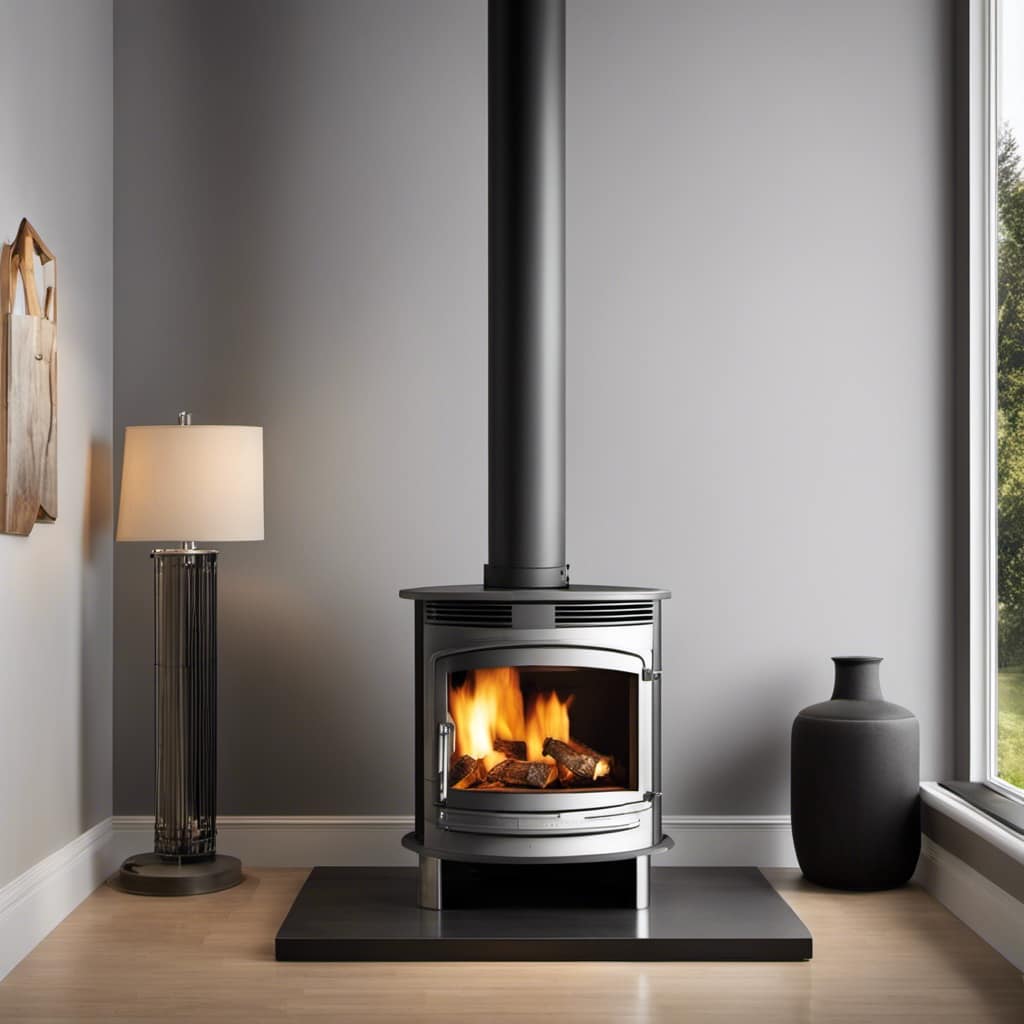
The efficient combustion process also reduces emissions and promotes a cleaner environment.
Understanding the Combustion Process
While the firebox and baffle system play important roles in a circulator wood stove, understanding the combustion process is crucial for optimal heating efficiency. The combustion process in a wood stove involves the burning of wood to produce heat. Here are three key aspects to consider:
Airflow Control: Properly controlling the airflow is essential to ensure efficient combustion. The circulator wood stove allows for precise regulation of air intake and exhaust, allowing for better control of the burning process.
Heat Transfer: The circulator design enhances heat transfer by maximizing the surface area exposed to the fire. This results in more efficient heating and less wasted energy.

Environmental Impact: Wood stove combustion can have environmental consequences, such as air pollution and carbon emissions. However, circulator wood stoves are designed to minimize these impacts by promoting complete combustion and reducing smoke and particulate matter emissions.
Understanding the combustion process in a circulator wood stove allows users to maximize heating efficiency while minimizing the environmental impact.
The Role of Airflow in a Circulator Wood Stove
Controlling the airflow is crucial in a circulator wood stove, as it allows for efficient combustion and optimal heating. The key to achieving this is through proper airflow control mechanisms.
In a circulator wood stove, there are primary and secondary air inlets. The primary air is responsible for igniting the wood and providing initial combustion. On the other hand, the secondary air is used to enhance and sustain the combustion process.

By adjusting the primary and secondary air inlets, you can regulate the amount of oxygen that reaches the fire. This, in turn, affects the temperature and efficiency of the stove. When the airflow is properly controlled, a secondary combustion process occurs, which helps burn the remaining gases and particulates, resulting in a cleaner and more efficient burn. This ultimately contributes to reduced emissions and increased heat output.
Understanding the importance of airflow control is crucial in maximizing the efficiency and performance of a circulator wood stove.
Now that we’ve discussed the role of airflow in a circulator wood stove, let’s explore how heat is distributed within the stove.
How Heat Is Distributed in a Circulator Wood Stove
The distribution of heat in a circulator wood stove depends on the design and placement of the heat convection channels. These channels are responsible for creating convective airflow, which plays a crucial role in evenly distributing the heat throughout the room.
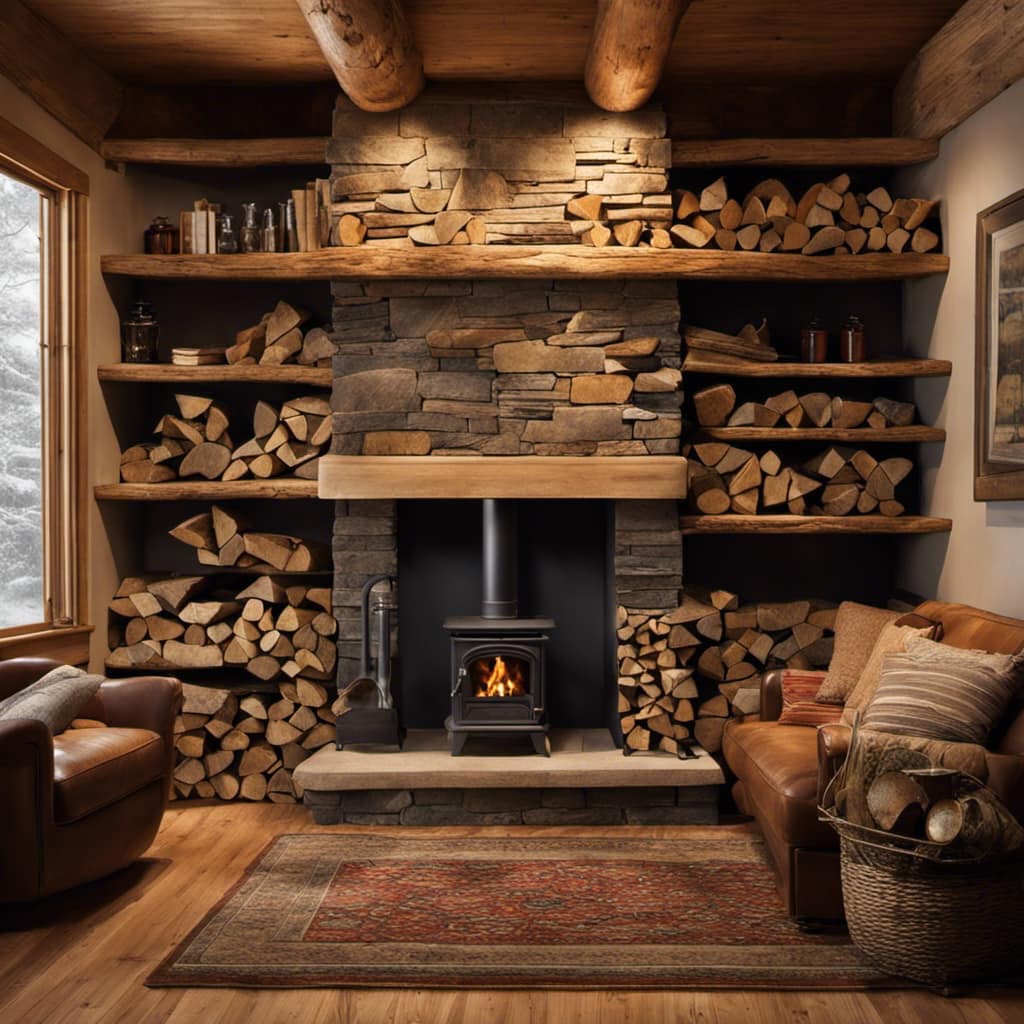
Here are three key factors that contribute to effective heat distribution in a circulator wood stove:
Design of convection channels: The layout and size of the convection channels determine the direction and flow of the convective airflow. A well-designed stove will have strategically placed channels that allow for efficient heat transfer.
Placement of heat convection channels: The location of the convection channels within the stove also affects heat distribution. Channels that are positioned closer to the top of the stove help to direct hot air towards the ceiling, while those situated lower down aid in circulating warm air at ground level.
Insulation: Proper insulation within the stove prevents heat loss and ensures that more heat is directed towards the convection channels, maximizing heat distribution.
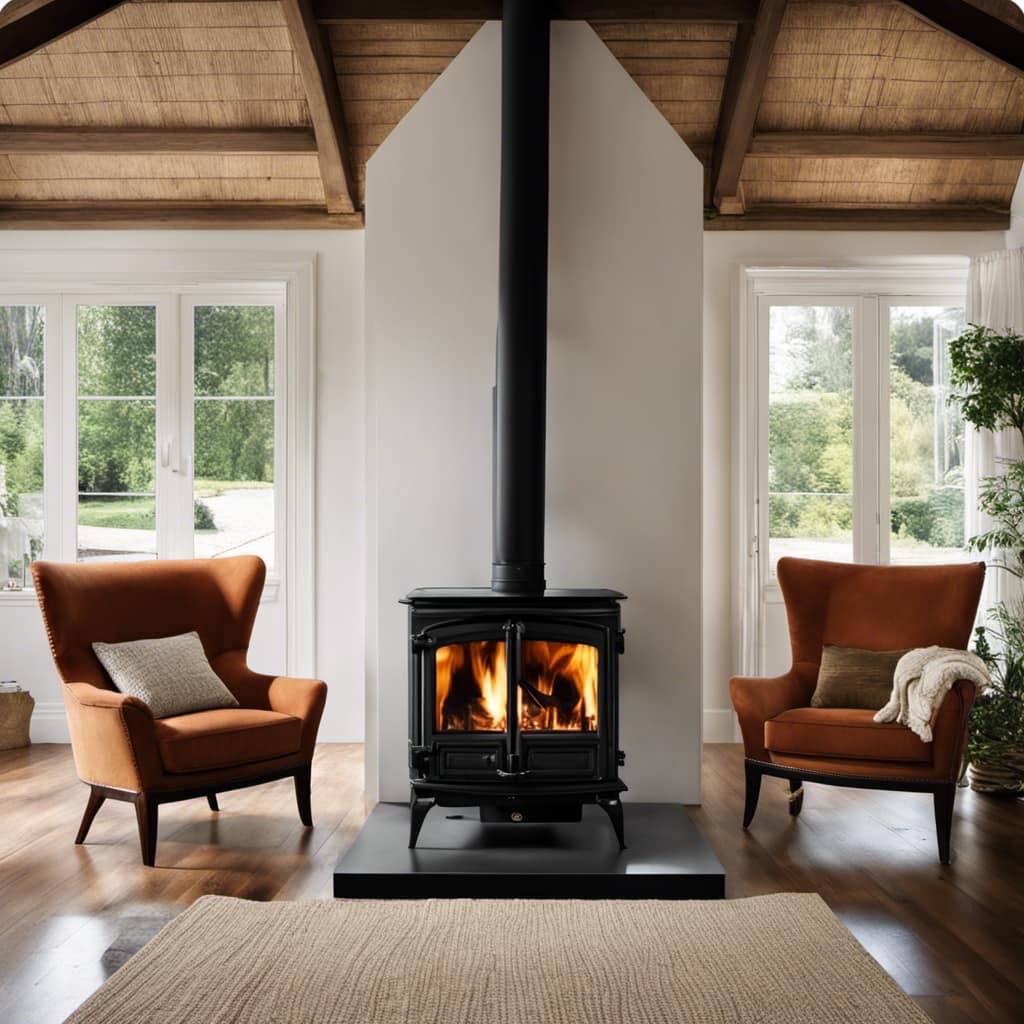
Understanding these factors is essential for maintaining and troubleshooting a circulator wood stove to ensure optimal heat distribution throughout your living space.
How Does the Fan on a Wood Stove Help with Circulation and Heating?
The wood stove fan purpose is to improve circulation and heating in a room. It helps distribute warm air more effectively, making the space more comfortable. By pushing hot air away from the stove, the fan ensures that heat is evenly dispersed throughout the room, maximizing its efficiency.
Maintaining and Troubleshooting a Circulator Wood Stove
I’ve found that regularly cleaning the flue and checking for any blockages is essential for maintaining and troubleshooting my circulator wood stove. When it comes to troubleshooting techniques, one of the first things I do is inspect the flue for any buildup of soot or creosote. This can restrict airflow and lead to poor combustion, resulting in decreased efficiency and increased emissions.
To clean the flue, I use a flue brush to remove any deposits, making sure to wear protective gloves and goggles. Another important aspect of maintenance is checking for any blockages in the air intake and exhaust vents. These can be cleared using a small brush or vacuum cleaner.
Frequently Asked Questions
How Long Does It Take for a Circulator Wood Stove to Heat up a Room?
It usually takes around 30 minutes for a circulator wood stove to heat up a room. The benefits of using a circulator wood stove for heating include efficient heat distribution, cost savings, and a cozy ambiance.
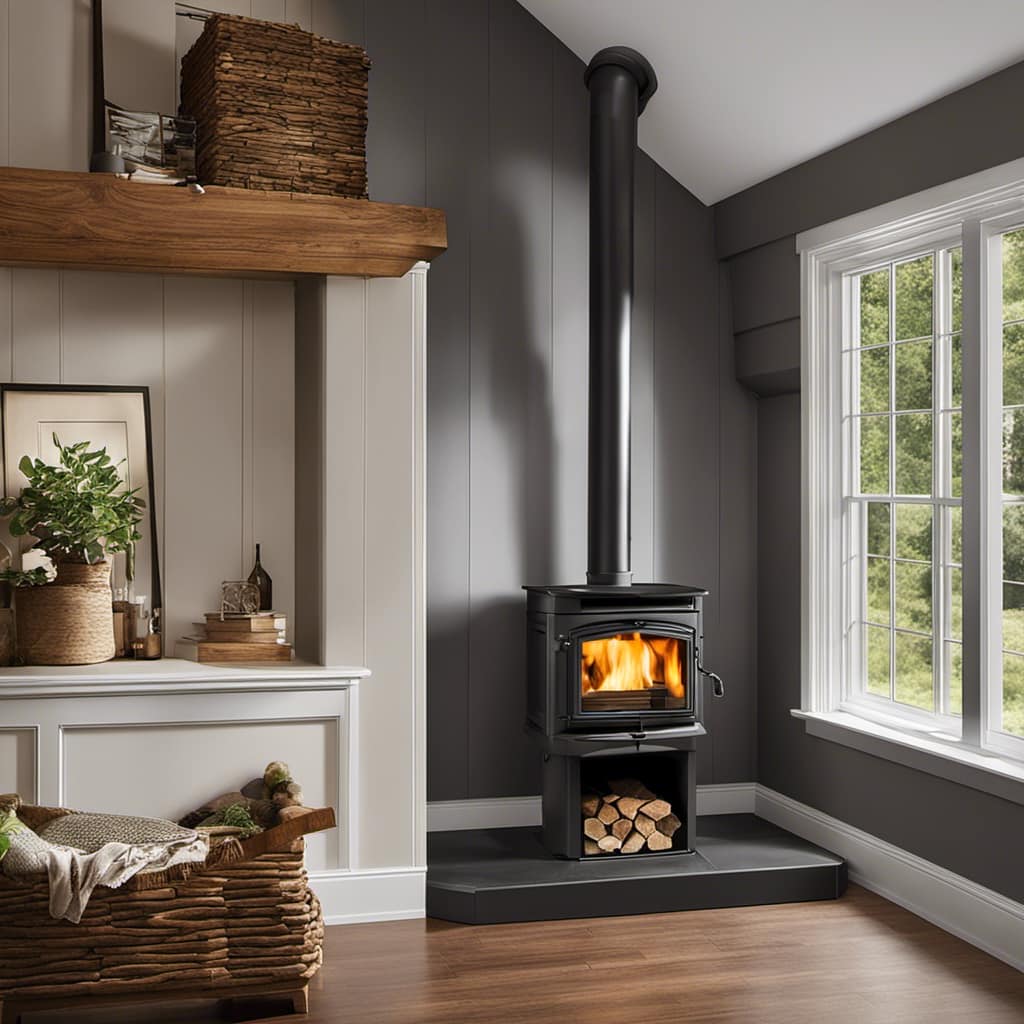
Can a Circulator Wood Stove Be Used as the Primary Source of Heat in a Home?
Yes, a circulator wood stove can be used as the primary heat source in a home. However, it is important to follow circulator wood stove safety precautions. The advantages include cost savings and the cozy ambiance it creates.
Are Circulator Wood Stoves Energy-Efficient?
Circulator wood stoves are energy-efficient and cost-effective. They provide an efficient way to heat a home by circulating the warm air throughout the room. This helps to maximize heat distribution and minimize energy waste.
Can a Circulator Wood Stove Be Used in a Mobile Home or Rv?
A circulator wood stove can be used in a mobile home or RV, but there are limitations and safety concerns to consider. Mobile homes have specific requirements for wood stoves, and proper installation and ventilation are crucial for safety.
Do Circulator Wood Stoves Require a Chimney or Can They Be Vented Through a Wall?
Vented through a wall? Absolutely! Circulator wood stoves offer versatile heating options, making them perfect for any space. No need to worry about a chimney, just vent it through a wall and enjoy the warmth.
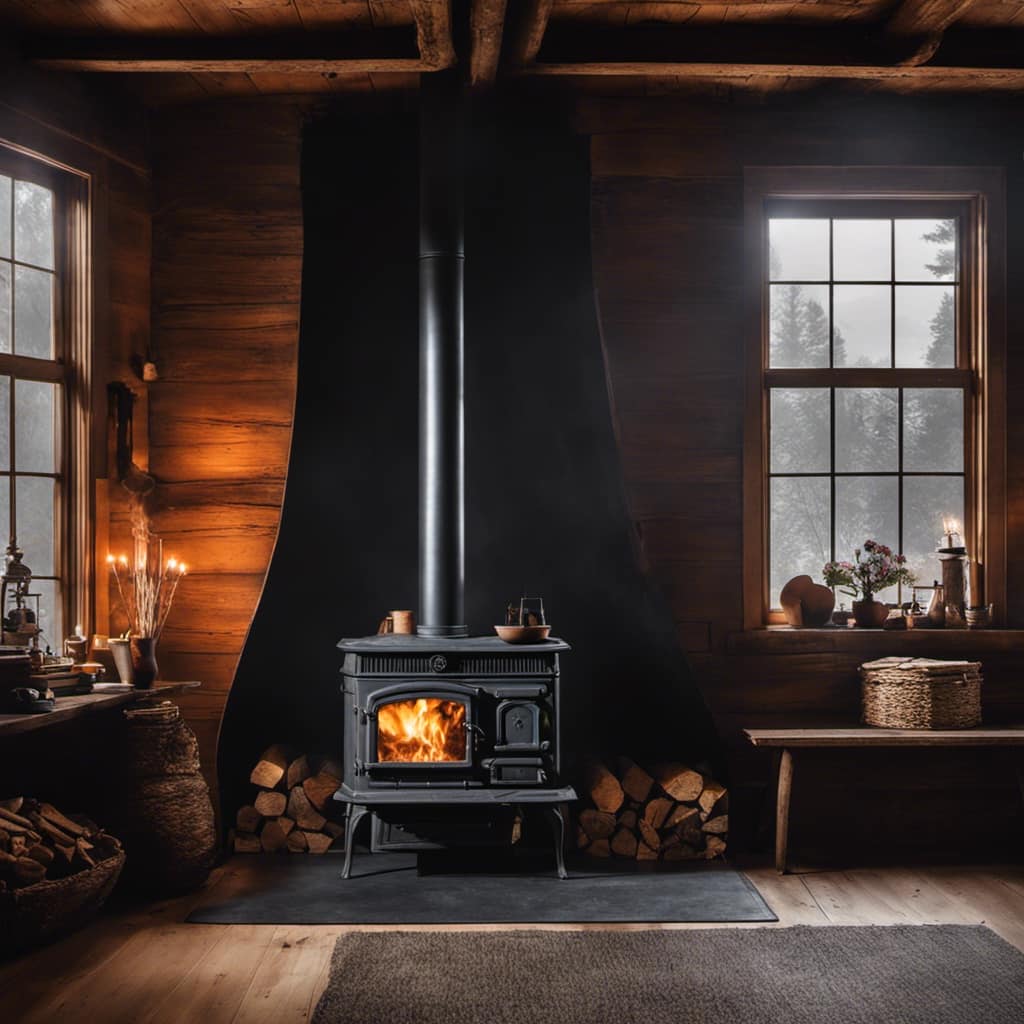
Conclusion
In conclusion, a circulator wood stove is a highly efficient and effective heating appliance that utilizes the principles of combustion and airflow to distribute heat throughout a space.
By understanding the components and operation of this stove, one can effectively maintain and troubleshoot any issues that may arise.
With its ability to provide consistent and comfortable warmth, a circulator wood stove is a reliable choice for those seeking a reliable and efficient heating solution.
Growing up surrounded by the vast beauty of nature, Sierra was always drawn to the call of the wild. While others sought the comfort of the familiar, she ventured out, embracing the unpredictable and finding stories in the heartbeat of nature.
At the epicenter of every remarkable venture lies a dynamic team—a fusion of diverse talents, visions, and passions. The essence of Best Small Wood Stoves is crafted and refined by such a trio: Sierra, Logan, and Terra. Their collective expertise has transformed the platform into a leading authority on small wood stoves, radiating warmth and knowledge in equal measure.




